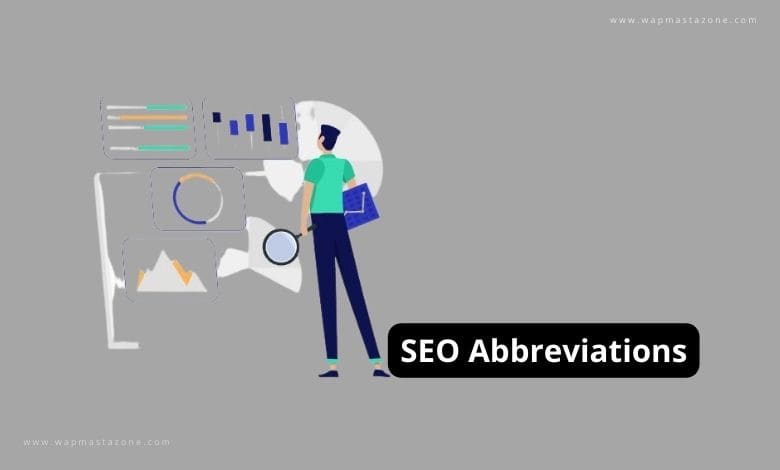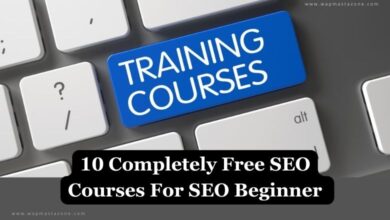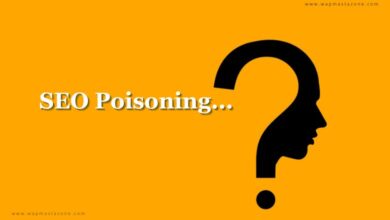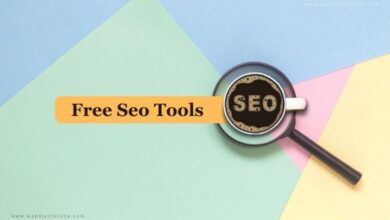140 SEO Abbreviations, Acronyms, and Terms For SEO Optimizer
SEO Abbreviations, SEO Acronyms, SEO Terms,

SEO abbreviations represent concise versions of common words or phrases frequently used in the field of Search Engine Optimization (SEO). Abbreviations, acronyms, and SEO terms are often used for convenience in communications among SEO experts and digital marketers. They help in simplifying conversations, reports, and analyses concerning SEO strategies and methodologies.
Also read: What is SEO?
Also read: The Concept of ON Page SEO – Ultimate Guide
Also read: The Concept of OFF Page SEO – Ultimate Guide
Here are some common categories of SEO abbreviations:
Common SEO Abbreviations
Technical SEO Abbreviations:
- URL: Uniform Resource Locator
- HTTP: Hypertext Transfer Protocol
- HTTPS: Hypertext Transfer Protocol Secure
- IP: Internet Protocol
- XML: Extensible Markup Language
- CMS: Content Management System
- JS: JavaScript
- HTML: Hypertext Markup Language
Analytics and Metrics Abbreviations:
- CTR: Click-Through Rate
- ROI: Return on Investment
- KPI: Key Performance Indicator
- DA: Domain Authority
- PA: Page Authority
- TF: Trust Flow
- CF: Citation Flow
- QS: Quality Score
- CPA: Cost Per Acquisition
Also read: Google Indexing and How Web Crawler Works
Also read: 13 Key Indications that your SEO Strategy is Successful
Content Optimization Abbreviations:
- ALT: Alternative Text
- KW: Keyword
- LSI: Latent Semantic Indexing
- CTA: Call to Action
- IA: Information Architecture
User Experience (UX) and User Interface (UI) Abbreviations:
- UX: User Experience
- UI: User Interface
Advertising and Paid Search Abbreviations:
- PPC: Pay-Per-Click
- PLA: Product Listing Ads
- CPC: Cost Per Click
- CPM: Cost Per Mille (Cost per thousand impressions)
Local SEO Abbreviations:
- NAP: Name, Address, Phone Number
- GMB: Google My Business
Also read: Backlinks in SEO – How to Acquire High Authority Backlinks
Also read: Top 15 Free Keyword Research Tools
140 SEO Abbreviations And Meanings for SEO Optimizers
| Nr. | SEO Abbreviations | Meaning |
| A | ||
| 1 | A/B | A/B Testing |
| 2 | ALT | Alternative Text |
| 3 | AMP | Accelerated Mobile Pages |
| 4 | API | Application Programming Interface |
| 5 | AR | Augmented Reality |
| 6 | AI | Artificial Intelligence |
| 7 | ASP | Application Service Provider |
| 8 | AJAX | Asynchronous JavaScript and XML |
| 9 | AOV | Average Order Value |
| 10 | AIDA | Attention, Interest, Desire, Action |
| B | ||
| 11 | B2B | Business-to-Business |
| 12 | B2C | Business-to-Consumer |
| 13 | BL | Backlink |
| 14 | BWT | Bing Webmaster Tools |
| 15 | BMM | Broad Match Modifier |
| 16 | BPA | Business Process Automation |
| 17 | BH | Black Hat (Unethical SEO practices) |
| 18 | BR | Bounce Rate |
| 19 | BHW | Black Hat World |
| 20 | BV | Business Value |
| Also read: 15 Top SEO Experts and Specialists | ||
| C | ||
| 21 | CF | Citation Flow |
| 22 | CMS | Content Management System |
| 23 | CRM | Customer Relationship Management |
| 24 | CTR | Click-Through Rate |
| 25 | CPC | Cost Per Click |
| 26 | CSS | Cascading Style Sheets |
| 27 | CDN | Content Delivery Network |
| 28 | CPA | Cost Per Acquisition |
| 29 | CWV | Core Web Vitals |
| 30 | CRO | Conversion Rate Optimization |
| 31 | CSV | Comma-Separated Values |
| 32 | CTA | Call to Action |
| 33 | CPM | Cost Per Thousand Impressions |
| 34 | CPI | Cost Per Impression |
| 35 | CPL | Cost Per Lead |
| 36 | CPV | Cost Per View |
| 37 | CAPTCHA | Completely Automated Public Turing Test to Tell Computers and Humans Apart |
| 38 | CR | Conversion Rate |
| D | ||
| 39 | DA | Domain Authority |
| 40 | DNS | Domain Name System |
| 41 | DMCA | Digital Millennium Copyright Act |
| 42 | DR | Domain Rating |
| 43 | DKI | Dynamic Keyword Insertion |
| 44 | DLP | Data Loss Prevention |
| 45 | DTD | Document Type Definition |
| 46 | DM | Direct Message |
| 47 | DUI | Duplicate URL Indexing |
| 48 | DT | Dwell Time |
| Also read: RoadMap to Becoming An SEO Expert | ||
| E | ||
| 49 | EAT | Expertise, Authoritativeness, Trustworthiness |
| 50 | EPM | Earnings Per Thousand Impressions |
| 51 | EMD | Exact Match Domain |
| 52 | ESR | Effective Search Results |
| 53 | EPC | Earnings Per Click |
| 54 | ESP | Email Service Provider |
| F | ||
| 55 | FCP | First Contentful Paint |
| 56 | FAQ | Frequently Asked Questions |
| 57 | FTP | File Transfer Protocol |
| G | ||
| 58 | GMB | Google My Business |
| 59 | GDN | Google Display Network |
| 60 | GA | Google Analytics |
| 61 | GBP | Google Business Profile |
| 62 | GSC | Google Search Console |
| 63 | GTM | Google Tag Manager |
| 64 | GUI | Graphical User Interface |
| 65 | GWT | Google Webmaster Toolkit |
| 66 | GDPR | General Data Protection Regulation |
| 67 | GCP | Google Cloud Platform |
| Also read: UX and SEO – The Impact of UX on SEO | ||
| H | ||
| 68 | HTTP | Hypertext Transfer Protocol |
| 69 | H1 | Heading 1 |
| 70 | H2 | Heading 2 |
| 71 | HREF | Hypertext Reference |
| 72 | HTML | Hypertext Markup Language |
| 73 | HCP | Hosted Content Provider |
| 74 | HMI | Human-Machine Interface |
| I | ||
| 75 | IOT | Internet of Things |
| 76 | IA | Information Architecture |
| 77 | IBL | Inbound Link |
| 78 | ISP | Internet Service Provider |
| 79 | IAB | Interactive Advertising Bureau |
| 80 | ICANN | Internet Corporation for Assigned Names and Numbers |
| J | ||
| 81 | JSON | JavaScript Object Notation |
| 82 | JS | JavaScript |
| 83 | JVM | Java Virtual Machine |
| K | ||
| 84 | KD | Keyword Difficulty |
| 85 | KWR | Keyword Research |
| 86 | KPI | Key Performance Indicator |
| 87 | KW | Keyword |
| 88 | KWD | Keyword Density |
| Also read: 7 Most Common SEO Mistakes you Should Avoid | ||
| L | ||
| 89 | LCP | Largest Contentful Paint |
| 90 | LSI | Latent Semantic Indexing |
| 91 | LPO | Landing Page Optimization |
| M | ||
| 92 | MRR | Monthly Recurring Revenue |
| 93 | MQL | Marketing Qualified Lead |
| N | ||
| 94 | NPS | Net Promoter Score |
| 95 | NLP | Natural Language Processing |
| O | ||
| 96 | OS | Operating System |
| 97 | ORM | Online Reputation Management |
| 98 | OBL | Outbound Links |
| P | ||
| 99 | PV | Pageviews |
| 100 | PR | PageRank |
| 101 | PBN | Private Blog Network |
| 102 | PVR | Page View Ratio |
| 103 | PFI | Pay for Inclusion |
| 104 | PFP | Pay for Performance |
| 105 | PHP | Hypertext Preprocessor |
| 106 | PPC | Pay Per Click |
| Q | ||
| 107 | QS | Quality Score |
| 108 | QA | Quality Assurance |
| R | ||
| 109 | RSS | Really Simple Syndication |
| 110 | RPI | Revenue per Impression |
| 111 | ROI | Return on Investment |
| 112 | RD | Referring Domains |
| S | ||
| 113 | SEO | Search Engine Optimization |
| 114 | SEM | Search Engine Marketing |
| 115 | SAB | Service Area Business |
| 116 | SERP | Search Engine Results Page |
| 117 | SSL | Secure Sockets Layer |
| 118 | SQL | Structured Query Language |
| 119 | SERM | Search Engine Results Management |
| 120 | SERP | Search Engine Results Page |
| 121 | SVG | Scalable Vector Graphics |
| 122 | SAAS | Software as a Service |
| T | ||
| 123 | TTFB | Time to First Byte |
| 124 | TLD | Top-Level Domain |
| 125 | TOS | Terms of Service |
| 126 | TM | Trademark |
| 127 | TTF | Topical Trust Flow |
| U | ||
| 128 | UX | User Experience |
| 129 | UI | User Interface |
| 130 | UTM | Urchin Tracking Module |
| 131 | UGC | User-Generated Content |
| V | ||
| 132 | VPN | Virtual Private Network |
| 133 | VPS | Virtual Private Server |
| 134 | VR | Virtual Reality |
| W | ||
| 135 | WWW | World Wide Web |
| 136 | WHOIS | Who Is Behind The IP Address |
| 137 | WAP | Wireless Application Protocol |
| 138 | W3C | World Wide Web Consortium |
| 139 | WP | WordPress |
| X | ||
| 140 | XML | Extensible Markup Language |
Also read: Top 15 Free Keyword Research Tools
Also read: AI SEO – The Impact of Artificial Intelligence on SEO Strategies
SEO Terms And Meaning
Below are some SEO abbreviations and terms and their full meanings.
- SEO: SEO is the art and science of enhancing a website’s visibility on search engines like Google.
- SERP: Search Engine Results Page – are platform where websites aim to secure their spot, as it directly influences their click-through rates and traffic.
- SEM: Search Engine Marketing – is a holistic approach of using both paid (PPC) and organic strategies to boost a website’s visibility.
- PPC: Pay-Per-Click – is an advertising model where advertisers pay a fee each time their ad is clicked.
- CTR: Click-Through Rate – the percentage of people who click on an ad or link after seeing it.
- ROI: Return on Investment – The yardstick for measuring the profitability of an investment.
- KPI: Key Performance Indicators – are quantifiable metrics used to evaluate the success of a campaign or strategy.
- CMS: Content Management System – are software like WordPress or Joomla that aids in creating, managing, and modifying digital content.
- XML: Extensible Markup Language – is a language for encoding documents in a format readable by both humans and machines.
- HTML: Hypertext Markup Language – is the standard language for building web pages.
- CSS: Cascading Style Sheets – is used to describe how HTML elements should be displayed on a webpage.
- JS: JavaScript – is a programming language commonly used for creating interactive effects within web browsers.
- UX: User Experience – is the overall experience a user has while interacting with a website.
- UI: User Interface – the visual elements through which a user interacts with a website or application.
- IA: Information Architecture – the structural design of a website, ensuring content is organized logically.
- URL: Uniform Resource Locator – is the web address that specifies the location of a resource on the internet.
- HTTP: Hypertext Transfer Protocol – is the protocol used for transmitting data over the internet.
- HTTPS: Hypertext Transfer Protocol Secure – is a secure version of HTTP that encrypts data for secure communication.
- SERM: Search Engine Reputation Management – involves managing a brand’s online reputation in search engine results.
- ROI: Rank on Investment – is a metric for measuring the improvement in search engine rankings.
- ALT: Alternative Text – is the text associated with an image, aiding accessibility and SEO.
- DA: Domain Authority A metric developed by Moz that predicts how well a website will rank on search engines.
- PA: Page Authority – Similar to DA, but focused on predicting a specific page’s ranking potential.
- TF: Trust Flow – is a metric from Majestic that gauges the trustworthiness of a site’s links.
- CF: Citation Flow – is the majestic’s metric indicating the influence of a URL based on the number of sites linking to it.
- CRO: Conversion Rate Optimization – is the strategy aimed at increasing the percentage of website visitors who take a desired action.
- ROI: Return of Interest – is the evaluating the gain or loss generated on an investment relative to its cost.
- API: Application Programming Interface – is a set of protocols and tools for building software applications.
- SER: Search Engine Ranking – a website’s position on a search engine results page.
- CMS: Customer Management System – are tools used for managing interactions with current and potential customers.
- NAP: Name, Address, Phone Number – are important information for local SEO, ensuring consistency across online listings.
- GA: Google Analytics – is a powerful tool for tracking website traffic and user behavior.
- GSC: Google Search Console – formerly known as Google Webmaster Tools, it offers insights into website performance on Google.
- CPC: Cost-Per-Click – is the amount advertisers pay for a single click in a pay-per-click advertising campaign.
- CPC: Cost Per Conversion – the expense incurred for each desired user action, like a sale or sign-up.
- CPM: Cost Per Mille/Thousand – is the cost of 1,000 ad impressions in an advertising campaign.
- PBN: Private Blog Network – a network of interlinked blogs used to manipulate search engine rankings.
- SMM: Social Media Marketing – the use of social media platforms to promote products or services.
- SMO: Social Media Optimization is the strategies to optimize a website’s content for social media sharing.
- RSS: Really Simple Syndication – is a format used to publish content frequently to subscribers.
- UXO: User Experience Optimization – is a means of Enhancing the overall user experience on a website.
- LSI: Latent Semantic Indexing – Keywords related to the main keyword, aiding in content relevance.
- KW: Keyword Words or phrases that define the content of a web page and its relevance to search engines.
- LT: Load Time – is the time it takes for a webpage to fully load.
- UXD: User Experience Design – the process of designing a product that’s user-friendly and enhances satisfaction.
- RT: Retweet – is a re-sharing of someone else’s content on Twitter.
- CPC: Cost Per Conversion – the cost incurred for each desired action, such as a sale or sign-up.
- CRM: Customer Relationship Management – are the strategies and tools to manage and analyze customer interactions and data.
- CTA: Call to Action – is a prompt that encourages users to take a specific action, like signing up or making a purchase.
- SERP: Search Engine Results Page – is the battlefield where websites compete for user attention through rankings.
- SER: Search Engine Ranking – a website’s position on a search engine results page.
- PLA: Product Listing Ads Visual advertisements that showcase products, often seen in e-commerce searches.
- QS: Quality Score – is Google’s rating of the relevance and quality of both keywords and PPC ads.
- CRM: Customer Relationship Management – are strategies and tools to manage customer interactions and data.
Also read: Differences And Benefits of Short and Long Tail Keywords in SEO



